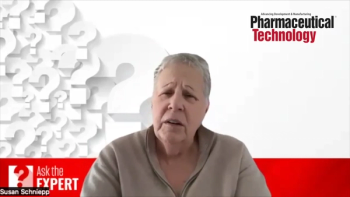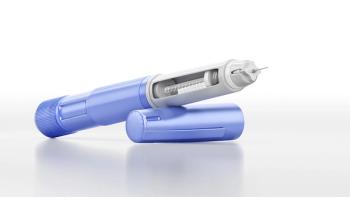
- BioPharm International-06-01-2016
- Volume 29
- Issue 6
Modern Manufacturing Comes of Age
FDA and bio/pharma companies get serious about continuous manufacturing to ensure product quality.
The need for more efficient methods to produce breakthrough therapies and biosimilars, along with strategies to manufacture conventional drugs more economically and reliably, is sparking industry investment in more sophisticated and innovative systems for making drugs and biologics. The shift to personalized or precision medicine and cellular and gene therapies puts a premium on fast production of small batches of cutting-edge medicines. At the same time, pressure to reduce manufacturing costs and to avoid shortages and recalls demands more reliable methods for ensuring the quality of large batches of conventional drugs.
At a Congressional
FDA encourages investment
Regulatory decisions are encouraging industry adoption of new manufacturing technologies after years of reluctance. In August 2015, FDA
In a landmark decision on a manufacturing change,
Vertex has drawn attention to its CM process for producing its cystic fibrosis drug Orkambi (lumacaftor/vacaftor), approved by FDA in 2015. The firm
According to press reports, GlaxoSmithKline is building a CM facility in Singapore, and Eli Lilly is investing in a CM operation in Cork, Ireland. Amgen has been shifting to more flexible production operations for its protein-based drugs for several years, most notably at a $200-million plant in Singapore that features modular designs and continuous processing. Amgen also is working with contract manufacturer Patheon to develop additional capacity for innovative production of new therapies in additional global markets.
Industry experts are encouraging such moves, as seen in a
Policy support
Such industry investment decisions are gratifying to Woodcock and other FDA officials, who have been urging pharma adoption of modern manufacturing for years, most visibly as part of the agency’s 2002 Pharmaceutical cGMPs for the 21st Century initiative. A 2004 guidance urged adoption of a process analytical technology (PAT) framework for innovative pharmaceutical development that builds quality testing into pharmaceutical manufacturing processes (6).
Manufacturers, however, were reluctant to invest millions of dollars in such systems without assurance that innovation won’t slow product approval or draw objections from plant inspectors. CDER’s Office of Pharmaceutical Quality (OPQ) has renewed the quality manufacturing campaign by offering early advice on innovative systems and coordinating review and inspection to avoid delays. CDER published
So far the ETT has participated in more than 25 meetings with sponsors to discuss manufacturing design and development issues and to offer recommendations for submission content for innovative technologies. The aim, says OPQ director Michael Kopcha, is to identify and address “potential roadblocks” and prevent delays related to adopting promising new technologies.
The Obama administration also is encouraging investment in advanced manufacturing technologies to facilitate efficient and reliable production of both conventional drugs and innovative cellular products and regenerative medicines. A
The White House panel notes that such systems may be particularly important in producing medical countermeasures and treatments for infectious diseases, which often demand rapid responses to emerging threats. Modular and plug-and-play equipment with reusable, flexible, or interchangeable parts are especially important for producing specialty orphan or breakthrough drugs and emergency treatments. Support for advancing bio/pharma manufacturing methods already is coming from the National Institutes of Health, the Department of Defense, the National Institute of Standards and Technology, and the Biomedical Advanced Research and Development Authority (BARDA) in the Department of Health and Human Services. And FDA is working with BARDA to support enabling technologies that encourage commercial adoption of continuous manufacturing.
Many of these issues were discussed in April at a conference on continuous manufacturing in Baltimore, MD, sponsored by the International Society for Pharmaceutical Engineering (ISPE). Panels addressed whether CM creates unique considerations for process validation, managing deviations in real time, and use of sensors and monitoring systems. Key issues for CM implementation include batch definition, materials traceability, and control strategy support for integrated drug specifications. CM for bioprocessing, moreover, involves new approaches for dealing with deviations, ensuring microbial control, and using inline measurements to confirm proper process performance.
A related challenge is that all these innovations require manufacturers to identify and train specialized workers to have the expertise and experience needed to operate and manage modern production systems.
References
1. J. Wechsler, “Modern Manufacturing Required for Breakthrough Drugs,”
2. Aprecia Pharmaceuticals, “FDA Approves the First 3D Printed Drug Product,”
3. L. Yu, “Continuous Manufacturing Has a Strong Impact on Drug Quality,”
4. Hovione, “Hovione and Vertex Partner in Continuous Manufacturing,”
5. Deloitte, “Advanced Biopharmaceutical Manufacturing: An Evolution Underway,”
6. FDA, Guidance for Industry PAT-A Framework for Innovative Pharmaceutical Development, Manufacturing, and Quality Assurance (CDER, CVM, ORA, September 2004).
7. FDA,
8. Subcommittee for Advanced Manufacturing,
Article DetailsBioPharm International
Vol. 29, No. 6
Pages: 8â9
Citation
When referring to this article, please cite it as J. Wechsler, "Modern Manufacturing Comes of Age," BioPharm International 29 (6) 2016.
Articles in this issue
over 9 years ago
Watch Out for the Hangoverover 9 years ago
Scale-Up of Complex Biologicsover 9 years ago
Essentials in Tolerance Design and Setting Specification Limitsover 9 years ago
Make Data Integrity Integral to CGMP Trainingover 9 years ago
Continued Process Verification: State of the Industryover 9 years ago
Scaling Up Progressive Expression Systemsover 9 years ago
Bioprocessing Technology Marches Onover 9 years ago
Controlling Glycosylation for Improved Product Qualityover 9 years ago
Biosimilars: Making the Switch Comes with Challengesover 9 years ago
Acoustic Separator Streamlines ClarificationsNewsletter
Stay at the forefront of biopharmaceutical innovation—subscribe to BioPharm International for expert insights on drug development, manufacturing, compliance, and more.




